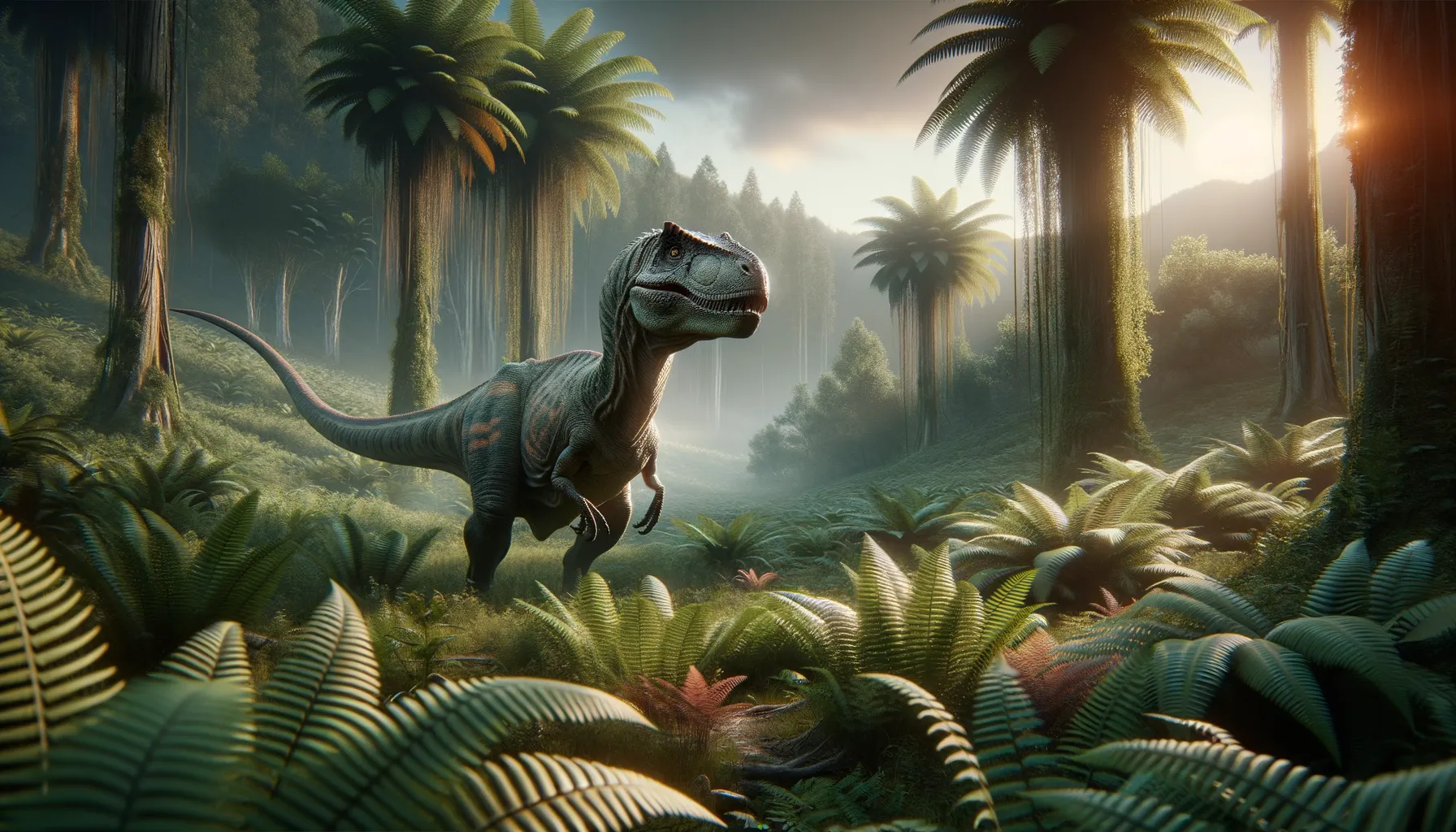
Ferganocephale
Roamer of the Jurassic's vibrant landscapes.
Period
Jurassic
Length
Roughly 2 meters long.
Height
About 1 meter tall at the hip.
Weight
Estimated to weigh around 200 kilograms.
Ferganocephale was a genus of dinosaur from the Late Jurassic period which is known primarily from fragmentary skull remains. As an herbivorous dinosaur, it would have roamed the lush lands where plant life flourished. It is postulated to have shared its environment with various other dinosaurs, relying on vegetation such as ferns for sustenance. Its fossil remains provide critical insight into the diversity of life during the Jurassic era.
Diet
Ferganocephale was a herbivore, feeding primarily on plants. Its diet likely included ferns, cycads, and other low-lying vegetation.
Hunting
As a herbivore, Ferganocephale would have had no predatory hunting behavior. Instead, it focused on foraging for plant material in its environment.
Environmental challenges
The Jurassic environment posed challenges such as fluctuating climates and competition for resources. Ferganocephale had to adapt to the presence of potential predators, finding ways to avoid or deter them. Seasonal changes may have influenced the availability of food, leading to possible migration or adaptation in feeding habits.
Speed
Likely slow due to its herbivorous nature.
Lifespan
Possibly 10-20 years based on similar species.
First discovery
Discovered in the Fergana Valley in 1997.
Fun Facts
- Ferganocephale was a dinosaur that lived during the Late Jurassic period, around 150 million years ago.
- This dinosaur is known from fossils found in what is now Kyrgyzstan, showcasing the diverse dinosaur fauna of Central Asia.
- Ferganocephale is part of the group known as pachycephalosaurs, often recognized for their thick skull roofs.
- Unlike its later relatives, Ferganocephale didn't have the distinct dome-shaped head, which is a characteristic feature of many pachycephalosaurs.
- The name 'Ferganocephale' means 'Fergana head', referencing the Fergana Valley where its fossils were discovered.
- Ferganocephale adds valuable information about the early evolution and geographical spread of pachycephalosaur dinosaurs.
- Being one of the earlier members of its group, Ferganocephale helps paleontologists understand the evolutionary history of dinosaur skull structures.
Growth and Development
Ferganocephale likely underwent steady growth throughout its life, akin to other dinosaurs. It may have experienced different stages of development, reaching maturity after a few years. The growth rate would have been influenced by factors such as food availability and environmental conditions.
Habitat
Ferganocephale lived in a verdant habitat of the Late Jurassic, surrounded by diverse plant life. Its environment was rich with vegetation, providing a steady food source. The presence of various other dinosaur species suggests a complex ecosystem where interaction was necessary.
Interaction with other species
Ferganocephale would have coexisted with other herbivores, possibly forming mixed-species groups. Such interactions were vital for finding food and avoiding predators. Although primarily peaceful, competition for resources might have occasionally led to conflicts with its peers.
Natural lifespan
In the wild, Ferganocephale could have lived up to 20 years.
Reproduction
As with many dinosaurs, Ferganocephale likely laid eggs. Its reproductive behavior might have involved nest-building and possible guard against potential threats. The young dinosaurs were likely nurtured until they gained independence.
Social behaviour
Ferganocephale may have displayed some degree of social behavior, possibly living in small groups. Group living would have provided benefits such as protection and resource sharing. Communication among individuals could have involved visual and auditory signals.
Fossil locations
Fossils mainly found in the Fergana Valley, Central Asia. These finds contribute to understanding regional dinosaur diversity. The sporadic fossil record makes comprehensive analysis challenging.
